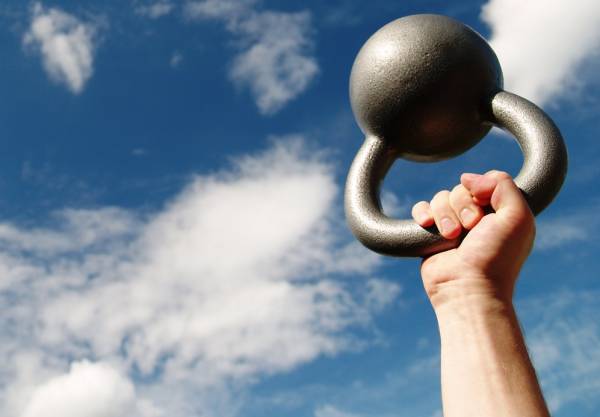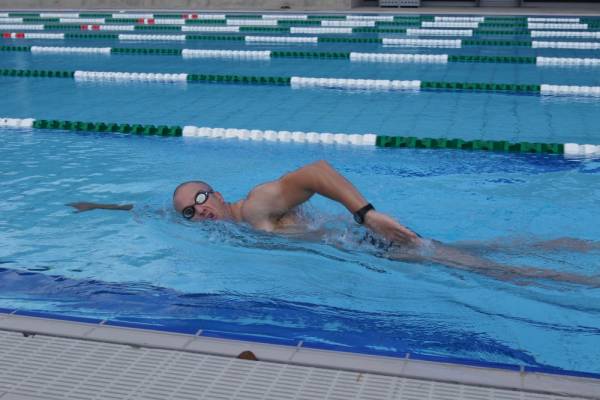One of the biggest issues for people wanting to take up triathlon is lack of swimming ability. The bike and run, while also potentially problematic, aren’t quite so bad, as you can just stop and have a break. If you stop swimming, you just sink.
Swimming Is Different
Even once people start swimming they are often slower to see improvements compared to biking and running because swimming is an unnatural activity. There are two main reasons for this.
First, water is a completely different medium to air with far greater resistance. It sounds so obvious, but we spend our whole lives moving through air and comparatively little ever moving through water, so it will never feel as natural as walking around does. And speaking of moving, have you noticed how we spend most of our time upright with feet on the hard ground, yet when we swim we’re horizontal and moving through that unfamiliar medium of water?
Focus on Drill Work and Skill Work
This is why for many people they will gain more time on their swim by focusing on drills rather than just swimming more, especially in the early stages. Drills fall into one of two categories – either they work on body position or they work on your feel of the water. The feel of the water is something you only get from many hours of swimming and is one of the reasons why swimmers train with such high volume – not just for fitness, but to develop the feel and work on the skill of swimming.
For those who are starting to look at swimming, maybe for CrossFit competition or to actually get into triathlon, your early swimming shouldn’t be about endless laps, but should spend far more time focusing on the skill of the movements. For CrossFitters getting into swimming, if you apply the same technique-driven focus to swimming as you do to your Olympic lifts, then you’ll find you have more success more quickly than if you just jump in and try to recreate the Games swim WODs.
Enhance the Feeling of the Movement
Sidestepping briefly, I spend a lot of time teaching people how to use kettlebells, and I’ve often found success in getting them to feel a certain muscle or movement before returning to whatever skill it is I am teaching them. By enhancing the feel I can give them a better press or whatever the exercise happens to be. An example to get people pressing better might be:
3 reps press from tall kneeling.This teaches them how to actually tighten their midsection and get the torso vertical, without having a break at the hips. Removing the lower legs from the drill and forcing them into a proper neutral hip position will help them once we return to standing.
Follow this with a set of 3 reps of bottoms up (BU) press from tall kneeling. In this drill we keep the same enhanced-body-position feel of the previous drill and add complexity by using the BU press. The BU press forces people to do a few more things perfectly, or else the bell will topple over (see position in photo below). They’ll learn to keep their forearm vertical, to create tension on the handle, and how to pack their shoulder properly – and all without needing any instruction.
If we return to pressing at this point, people will typically have a better feeling of the groove of their press, as well as the correct body position needed. And this is exactly the type of format we’re going to follow in the drills below in order to get a better feel for the water.

Swimming With Fists
The way we’re going to do this is by removing part of your paddle and closing the hand. By swimming with fists you’ll learn a few different things, but chief among them will be a better feel for what your hand does in the water and how to grab a better hold on the water with each stroke.
Because that’s what swimming is – you grab a handhold on the water, no different to grabbing a rung on a ladder, and pull yourself past your hand. The intent is not to perform an open-chain pull through the water, but to lock the hand in place, in effect turning the movement into a closed-chain one in the same way that you tell someone doing bench press to push themselves away from the bar. The fist drill will help you do that.
Here’s two options that both work. Both were recently shown to me by the super coaches at Thanyapura’s Supercamp. The first is by triathlon superstar Jurgen Zack, the second by Javier Gomez’s coach Miguel Lopez.
Jurgen’s Fist Set
- Warm up – 200m-400m.
- Swim 100m as 25m left fist/right hand open, 25m right fist/left hand open, 25m both fists, 25m swim. Repeat for 4-6 rounds.
This sequence is fantastic for an extra reason over regular fist drills because doing them single sided will help you feel if your stroke is even. There can be differences in where you place your hands in the water and how hard you stroke with either arm. Returning to normal swimming after using fists will make you feel like you’ve got enormous paddles on your hands heightening how well you can pull.
Miguel’s Fist Set
- Warm up – 200m-400m.
- Swim 200m as 25m with thumbs out, 25m with pinkies out, 25m with index fingers out, 25m with thumbs and pinkies out (the shaka/BJJ sign), 25m index fingers and pinkies out, 75m swim. Repeat for 4-6 rounds.
This series will show you exactly how much each finger matters when it comes to hand placement in the water. (And remember that you shouldn’t be swimming with fingers together, but rather slightly splayed apart).

Make Every Session Technical
Every swim session should have some technical swimming in it, particularly for beginners. You’ll see way more improvement by spending time on drills than you will on just swimming. And for more advanced swimmers, these are still great drills to add into training, either as part of the warm up or after a session of paddle work to regain your feel for the water before you finish the session.
Photos 1 & 2 courtesy of Shutterstock.
Photo 3 courtesy of Andrew Read.






